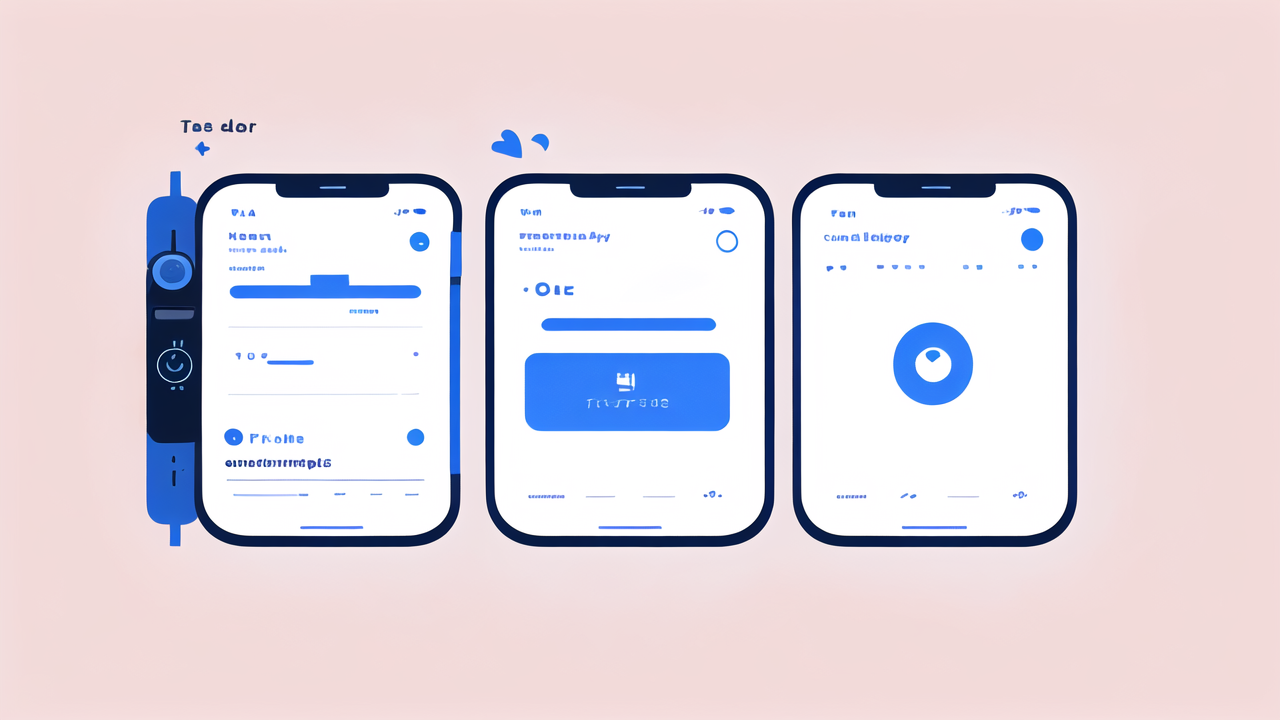The Evolution of Wearable Fitness Devices
Pioneering Smart Bands and Their Impact
Smart bands have come a long way since their inception. Early models tracked basic metrics like steps and calories. These devices sparked a fitness revolution, making people more aware of their daily activity levels.

As technology advanced, smart bands added features like heart rate monitoring and sleep tracking. This expanded their appeal beyond fitness enthusiasts to health-conscious consumers. The impact was significant, encouraging people to move more and prioritize their well-being.
Smart bands also paved the way for more advanced wearables. They showed the potential of always-on health monitoring. This laid the groundwork for today's sophisticated health trackers and smartwatches.
Advancements in Biosensor Technology
Biosensor technology has been a game-changer for smart bands. Early sensors could only track motion and heart rate. Now, advanced biosensors can measure a wide range of health metrics.
Recent innovations include:
- Continuous glucose monitoring
- Blood oxygen level tracking
- Stress level assessment
- Skin temperature measurement
These sensors are becoming smaller, more accurate, and more energy-efficient. This allows smart bands to offer more features while maintaining long battery life.
Biosensors are also becoming more versatile. Some can now detect multiple biomarkers with a single sensor. This opens up new possibilities for comprehensive health monitoring.
Consumer Adoption and Market Growth
The smart band market has seen explosive growth in recent years. Consumers are increasingly looking for ways to track and improve their health. Smart bands offer an affordable and accessible solution.
Key factors driving adoption include:
- Increasing health awareness
- Rising healthcare costs
- Growing interest in preventive care
- Technological advancements making devices more user-friendly
The market is expected to continue growing. Analysts predict a compound annual growth rate of over 15% in the coming years. This growth is fueled by both new users and existing users upgrading their devices.
As smart bands become more advanced, they're appealing to a wider audience. They're no longer just for fitness enthusiasts. Many people now see them as essential health tools.
Key Features of Next-Gen Smart Bands
Integration of AI and Machine Learning
Artificial Intelligence (AI) and Machine Learning (ML) are revolutionizing smart bands. These technologies allow devices to learn from user data and provide personalized insights.

AI can analyze patterns in your activity, sleep, and other metrics. It can then offer tailored recommendations to improve your health. For example, it might suggest the best time for you to exercise based on your sleep patterns.
ML algorithms can also detect anomalies in your health data. This could help identify potential health issues before they become serious. Some smart bands can now detect irregular heart rhythms, a potential sign of heart problems.
Future smart bands may use AI to:
- Predict and prevent health issues
- Optimize workout plans
- Personalize nutrition advice
- Manage stress levels
As AI and ML continue to advance, smart bands will become even smarter and more helpful.
Advanced Metrics and Analytics
Next-gen smart bands are moving beyond basic fitness tracking. They now offer advanced metrics and in-depth analytics. This gives users a more comprehensive view of their health.
Some of the advanced metrics now available include:
- VO2 max estimation
- Recovery time calculation
- Stress score
- Body composition analysis
These metrics provide valuable insights into overall health and fitness. They can help users make more informed decisions about their lifestyle and training.
Analytics have also become more sophisticated. Smart bands can now show trends over time and correlations between different metrics. This helps users understand how different factors affect their health.
Many smart bands now offer detailed sleep analysis. This includes tracking sleep stages and providing tips for better sleep quality. Some can even detect sleep disorders like sleep apnea.
Interoperability and Ecosystem Development
Interoperability is becoming a key feature of next-gen smart bands. These devices can now connect and share data with other health and fitness tools. This creates a more comprehensive health ecosystem.
Smart bands can sync with:
- Smartphone health apps
- Smart scales
- Fitness equipment
- Nutrition tracking apps
This integration allows for a more holistic approach to health tracking. For example, your smart band data can be combined with your diet information to give more accurate calorie burn estimates.
Many companies are developing their own health ecosystems. These include apps, devices, and services that work together seamlessly. This can provide a more comprehensive and user-friendly experience.
Some smart bands can now connect to healthcare systems. This allows users to share their data directly with healthcare providers. It can help in early detection of health issues and remote patient monitoring.
Regulatory Considerations and Challenges in the US
The FDA Landscape for Wearable Tech
The FDA plays a crucial role in regulating wearable tech in the US. As smart bands offer more advanced health features, they face increased scrutiny.

The FDA categorizes most smart bands as low-risk devices. These don't require pre-market approval. However, bands that claim to diagnose or treat medical conditions face stricter rules.
Key FDA considerations for smart bands include:
- Accuracy of measurements
- Safety of materials used
- Claims made about health benefits
The FDA has created a Digital Health Innovation Action Plan. This aims to provide clearer guidelines for health tech companies. It includes a pre-certification program for trusted developers.
As smart bands become more advanced, the regulatory landscape may change. Companies need to stay informed about FDA requirements to ensure compliance.
Ensuring User Privacy and Data Protection
Privacy and data protection are major concerns with smart bands. These devices collect sensitive health data. Protecting this information is crucial.
Key privacy considerations include:
- Secure data storage and transmission
- User control over data sharing
- Transparent data usage policies
Companies must comply with regulations like HIPAA for health data. They also need to consider international laws like GDPR if they operate globally.
Many smart band makers are implementing stronger security measures. These include encryption and two-factor authentication. Some are also giving users more control over their data.
As smart bands collect more detailed health data, privacy concerns may grow. Companies will need to balance innovation with strong data protection measures.
Ethical Implications and Responsible Innovation
The development of advanced smart bands raises ethical questions. These devices have the potential to greatly impact users' lives and health decisions.
Some ethical considerations include:
- Accuracy and reliability of health advice
- Potential for increased health anxiety
- Impact on health disparities
- Use of AI in health decision-making
Responsible innovation is key in this field. Companies need to consider the broader implications of their technology. This includes potential unintended consequences.
There's also a need for diversity in development teams. This helps ensure that smart bands work well for all users, regardless of age, gender, or ethnicity.
As smart bands become more advanced, ethical considerations will become more complex. Ongoing dialogue between tech companies, health experts, and ethicists is crucial.




Leave a comment
This site is protected by hCaptcha and the hCaptcha Privacy Policy and Terms of Service apply.